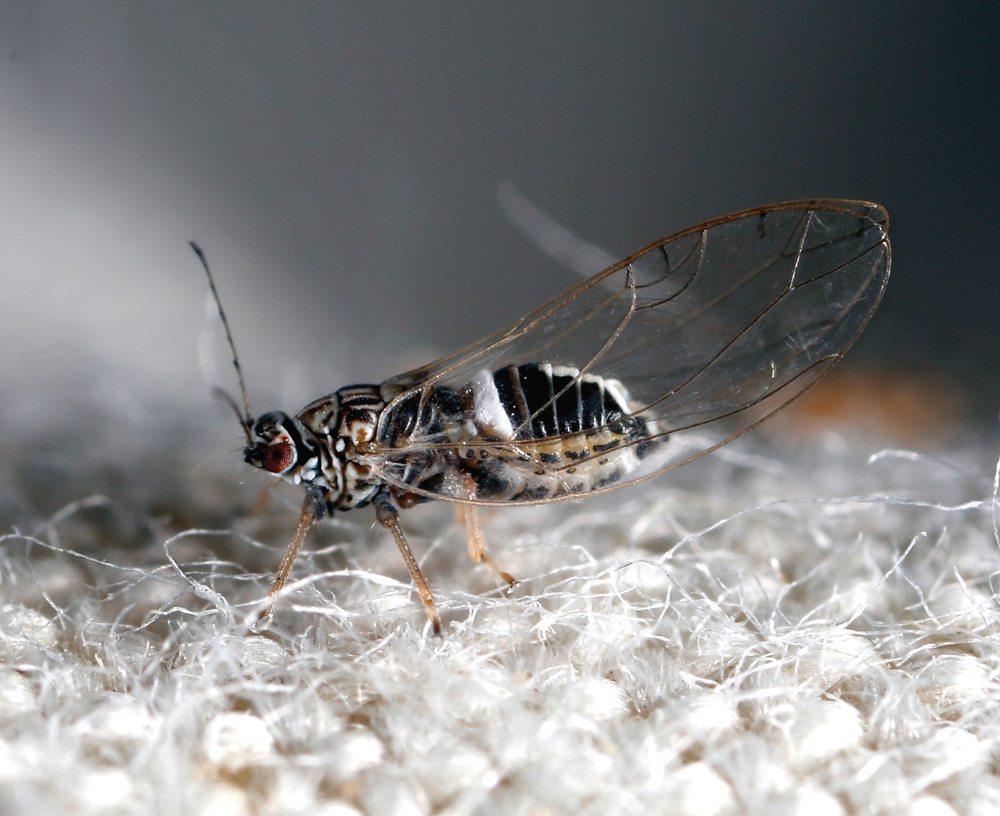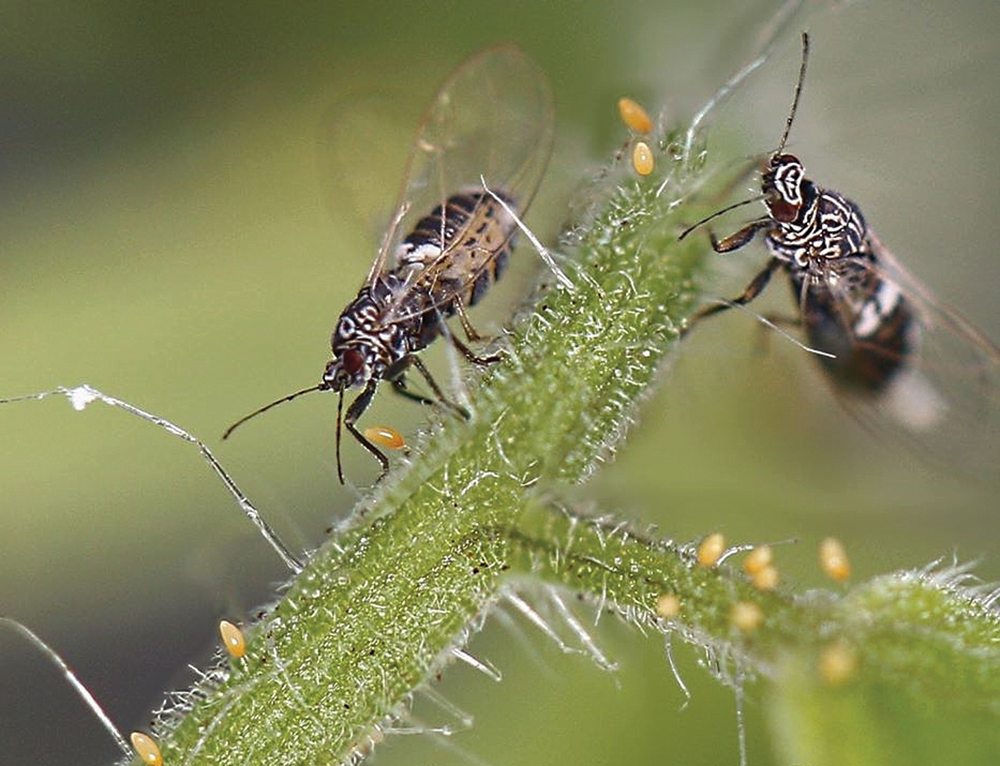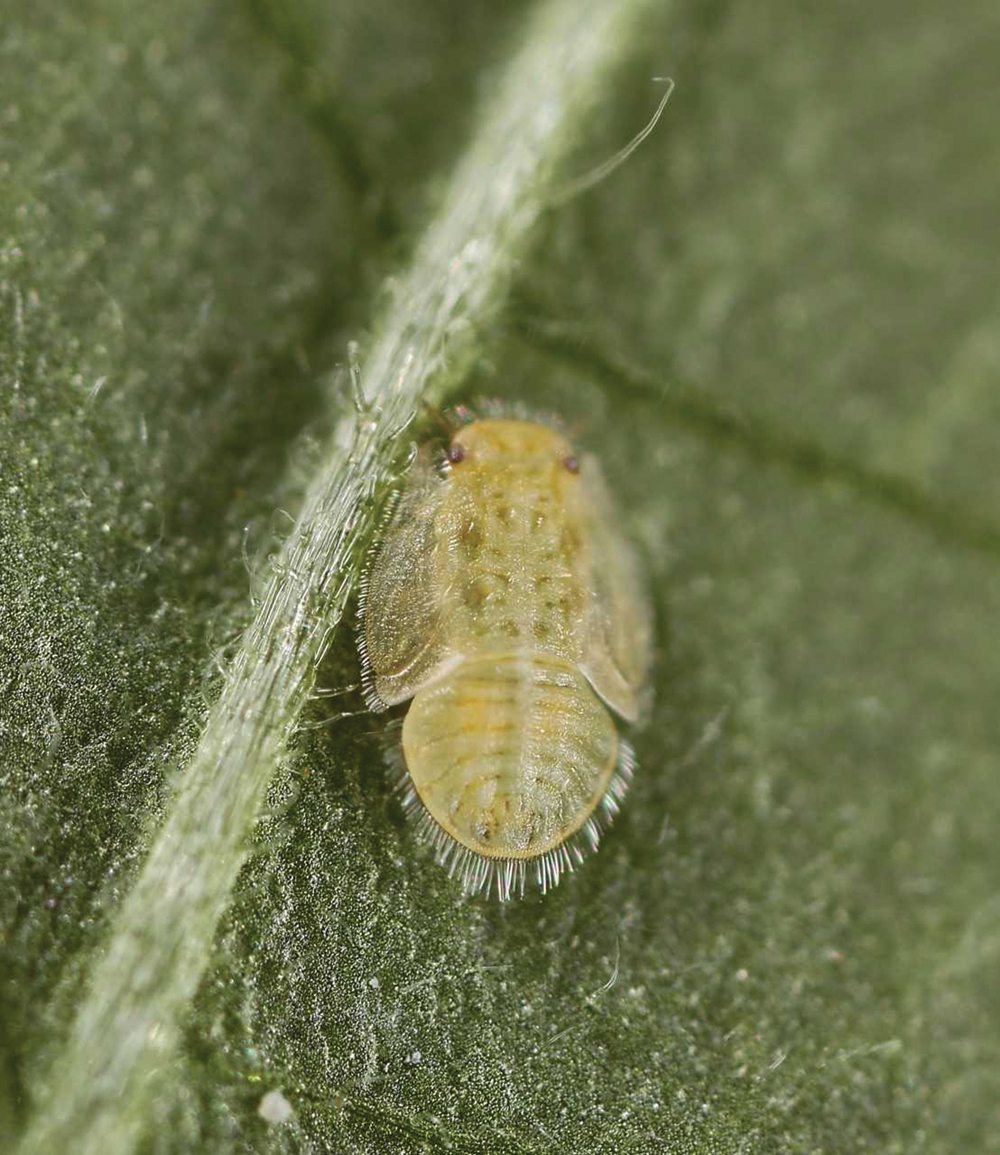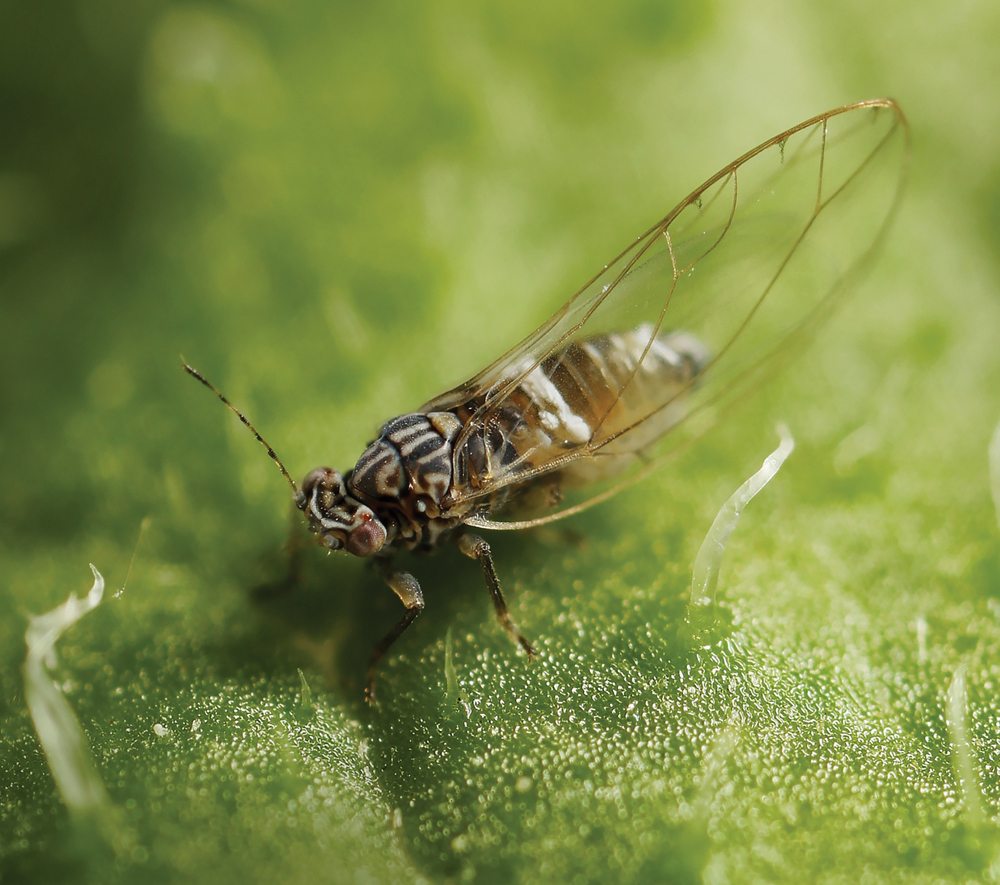Source: Grainews
Zebra chip is a fun, jaunty name for a potato disease that has nobody in the industry laughing. The disease, which causes harmless but unsightly stripes in potato chips, costs producers millions of dollars annually in New Zealand and the U.S.
Now the zebra chip pathogen has been found for the first time in western Canada.
 To be clear, explains University of Lethbridge professor Dan Johnson, who headed the Canadian potato psyllid and zebra chip monitoring network, zebra chip has not yet begun to affect potato production in Canada. So far, Candidatus Liberibacter solanacearum (Lso), the zebra chip pathogen, has been detected in small numbers of potato psyllids—the pathogen’s insect vector—in Alberta. But the pathogen has not yet been found in any potato plant tissue.
To be clear, explains University of Lethbridge professor Dan Johnson, who headed the Canadian potato psyllid and zebra chip monitoring network, zebra chip has not yet begun to affect potato production in Canada. So far, Candidatus Liberibacter solanacearum (Lso), the zebra chip pathogen, has been detected in small numbers of potato psyllids—the pathogen’s insect vector—in Alberta. But the pathogen has not yet been found in any potato plant tissue.
“There’s no infection of potatoes and no symptoms. So there’s no zebra chip yet, which is good news. But it’s likely to turn up,” he says. “Depending on the weather and other factors it’s possible that a tiny portion of the bug will continue to carry the pathogen and not transmit it. That’s a possibility. But to be realistic, eventually it caught up with the crop in other places.”
The pathogen was found in 2017, the final year of a five-year research and monitoring program mostly concentrated in southern Alberta, where most of the province’s processing potatoes are grown.
Johnson says potato psyllids had not been found in Canada until the program started. Small numbers of potato psyllids were found in increasing numbers in Alberta between 2015 and 2017. The insect was also found for the first time in Saskatchewan and Manitoba in 2016. No potato psyllids have been found east of Manitoba—so far.
Not all potato psyllids carry Lso, says Johnson, but insects captured by the team in separate sites have tested positive for the pathogen, which may mean there’s a “widespread incidence of Lso at a very low level.”
The pathogen was detected and identified by Larry Kawchuk, a pathologist at Agriculture and Agri-Food Canada’s Lethbridge Research and Development Centre.
Management
 Johnson’s monitoring project has not been renewed, but the discovery of the zebra chip pathogen is a game-changer for the industry. A new five-year monitoring program is being planned by the Potato Growers of Alberta (PGA) in partnership with Alberta Agriculture and Forestry, Promax Agronomy and other industry partners, says Thomas McDade, agricultural director at PGA.
Johnson’s monitoring project has not been renewed, but the discovery of the zebra chip pathogen is a game-changer for the industry. A new five-year monitoring program is being planned by the Potato Growers of Alberta (PGA) in partnership with Alberta Agriculture and Forestry, Promax Agronomy and other industry partners, says Thomas McDade, agricultural director at PGA.
The program will be “a very active surveillance monitoring system that will be used to help potato growers make quick and timely decisions on when to, and when not to, take preventative action,” says McDade.
Its initial focus will be on tracking potato psyllid numbers, as well as numbers of the insect’s natural predators.
The latter are actually an important control, says Johnson: “In a potato field there’s so much diversity, and many of these insects are potential natural enemies of the potato psyllid.”
For example, during the survey, Johnson’s team found a lot of species of ladybird beetles, which “demolish” immature psyllids. “If by luck or by management producers can hold off the insecticides a bit, those natural enemies can be a buffer,” he says.
 In Alberta, due to the absence of high numbers of Colorado potato beetle in recent years, producers are only spot-spraying for the insect pest, which has allowed beneficial insects to establish reasonable populations.
In Alberta, due to the absence of high numbers of Colorado potato beetle in recent years, producers are only spot-spraying for the insect pest, which has allowed beneficial insects to establish reasonable populations.
Going forward, potato producers across western Canada should learn to recognize potato psyllids at all life stages. Johnson says the eggs and immature stages of the insect are distinctive and can be spotted on the undersides of leaves. Newly emerged adults are white or yellow and after several hours they darken to display sculptured lines on the thorax and head and white stripes on the abdomen.
If producers suspect they’ve captured potato psyllids, they are encouraged to contact provincial and state potato associations or agriculture departments and get the insects tested for Lso.
